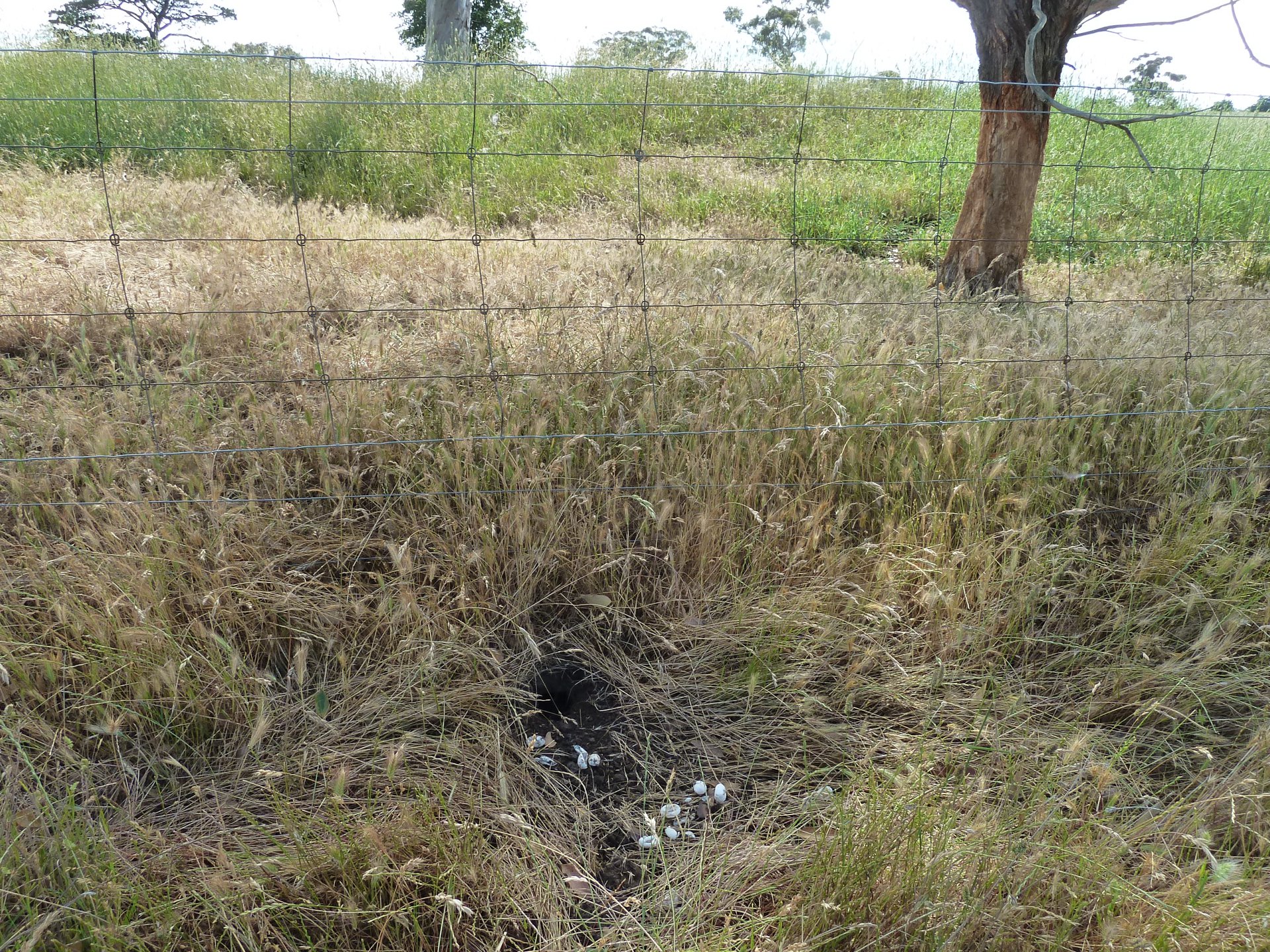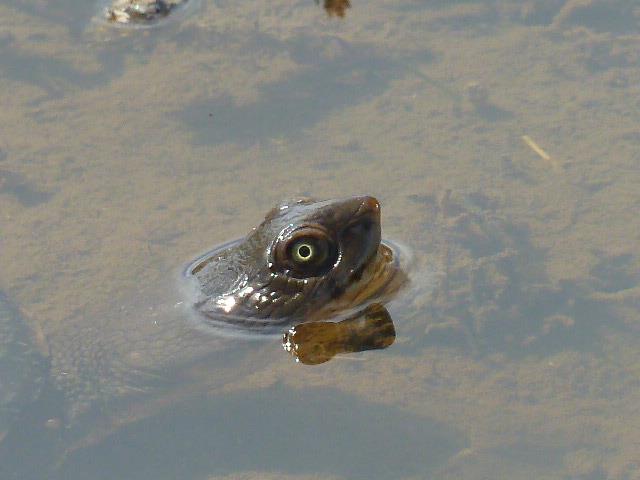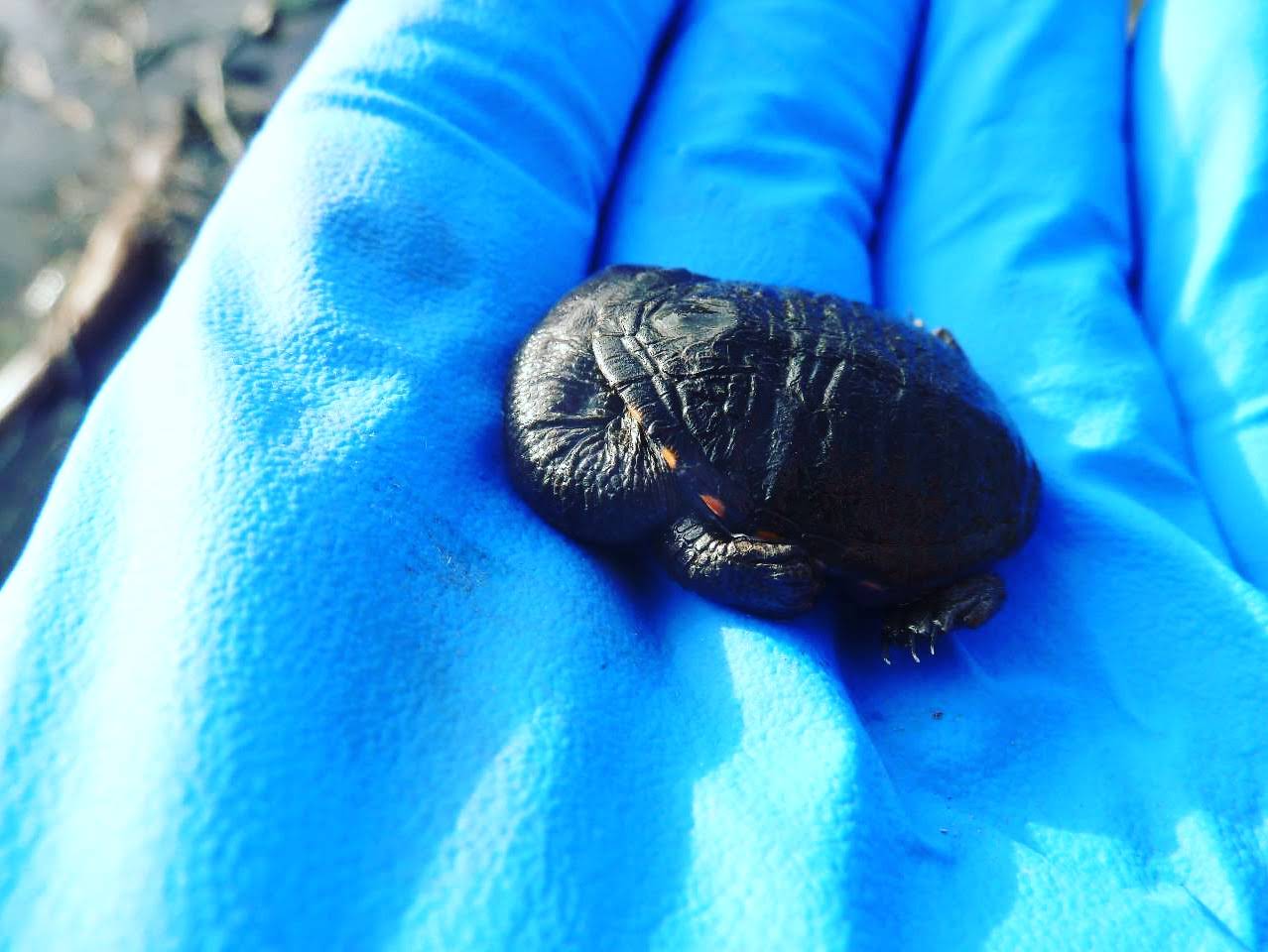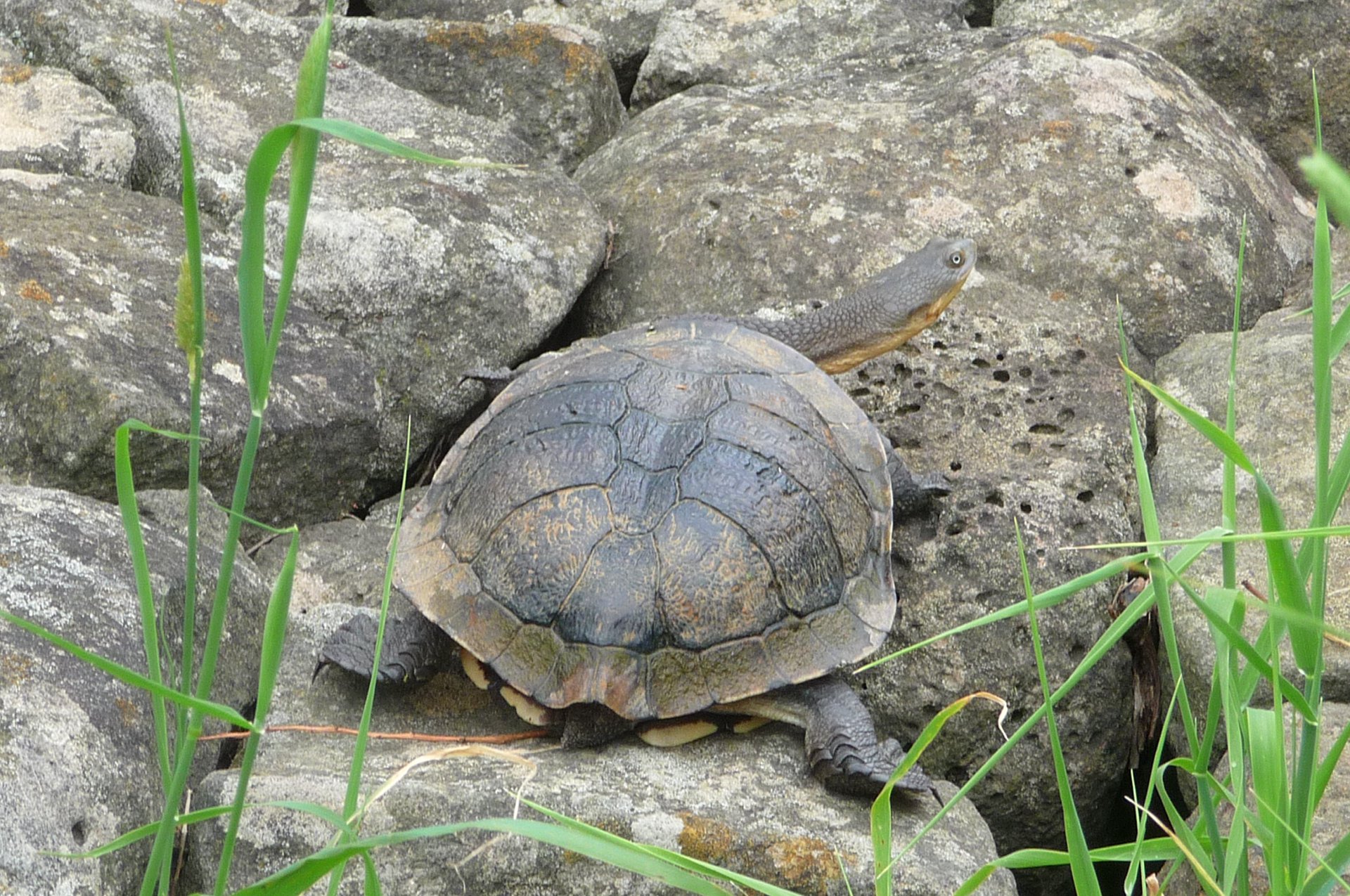Australia has more than 25 species of endemic freshwater turtles, some found only in single stretches of river or water systems. In my region of the Corangamite Shire, south-west of Melbourne, we have just one species: the Eastern Long-necked Turtle, Chelodina longicollis.
I have always been charmed by the Eastern Long-necked Turtles that roam our farm, somehow navigating the fences to find water. They make no sounds and smell awful if you pick them up. They don’t frolic or preen or do most of the endearing things that one might love about something like a Superb Fairy-wren. But love them I do.
There are several locations on our property where an unlucky turtle can become trapped on its way to another dam, and since childhood I would do the rounds to check that no disasters had occurred. Not long ago it struck me that I hadn’t seen any juvenile turtles in… how long? …years at least. This got me wondering, why wasn’t I seeing any young turtles anymore?
With this seed of worry planted, I scoured the internet for any information I could find on breeding, behaviour, migration, populations… and was amazed by how little information there can be on ‘common’ species. However, I managed to find my answer in a few academic studies on turtles of the Murray River that observed almost no juvenile recruitment for decades and rapidly ageing populations.

The driving force behind this population crisis is foxes. Every year, quietly and efficiently, foxes predate up to 95% of turtle nests soon after they are laid, sometimes also killing the laying mother. Predominantly because of this, study populations in areas like the Murray river system have declined by up to 70% in the past 40 years.
This finding shocked me – in all my years wandering around my farm I had never even seen a turtle nest. It hadn’t occurred to me to look, and suddenly I felt naive and ashamed for having unwittingly watched an unfolding crisis for so many years, thinking ‘isn’t it great we have so many turtles?’. What I was seeing was not a healthy, diverse population, but the same large group of seniors breeding yearly, to no avail, and I know every farm throughout the region would have been experiencing the same thing.
With awareness came responsibility.
I began planning my conservation approach, gathering baseline data by sitting diligently on dam banks recording turtle noses poking out of the water, and mapping evidence of old predated nests and sites which appeared perfect for laying. The management options were limited – undertake more fox control and try to individually protect freshly laid nests.
With the first heavy rains of late November, the 2017 nesting season began. My new awareness meant that suddenly I was seeing destroyed nests and fragmented papery eggshells everywhere. Wandering the fields around just two of our dams, my father and I found over 70 predated nests. The scale was incredible; I pictured foxes collapsed together somewhere in deeply satisfied food comas. Maybe this was their equivalent of the Christmas feast every year.
Spotting a female turtle in the act of laying proved near impossible, but with determination and sheer luck we found three intact nests – hard plugs of flattened mud which looked slightly out of place. We pinned plastic mesh over each and prepared to watch and wait.

The water sources nearest the nests dried up within a month; this was the next obstacle. There was no water within 300 metres, and a journey that long would be certain death for hatchlings. Without knowing when they would emerge, we opted to cover the nests with cages that could keep the hatchlings safe but trapped underneath. These were checked every morning towards the start of the likely hatching period. In May of 2018, after six months of diminishing hopes, one of the nests finally looked different. The dirt plug had cracked, and so we lifted it off to reveal a cluster of tiny, dried babies the size of ten-cent coins.
We checked the other nests and collected 22 hatchlings in total, with a further 20 eggs that had never developed. Two hatchlings had died some time ago, and the walls of the nests had evidence of futile attempts to escape. Perhaps conditions this year had not been wet enough and these babies might not have been able to dig out at all. We rehydrated the surviving babies in some pond water, and once they were moving fast we released them – although they headed straight for the dams that unfortunately offer minimal protection.
It is so painful remembering these tiny hatchlings bobbing uselessly in the shallows, struggling to swim either up or down. The need for a strength-in-numbers approach for turtles is clear to me now. Each female lays up to three nests with around eight eggs per nest. Not all of the eggs develop, and hatchlings can’t always dig their way out. The ones that do find their way out of the nests then need to run the gauntlet to water, spend their first two years at the mercy of every predator, and then wait eight to ten years until sexual maturity. And that’s without the bottomless stomachs of introduced predators included in the equation.

This journey has triggered a huge shift in my family’s awareness and relationship with the biodiversity on our farm. I’m gathering data on all of our property’s flora and fauna species now, and we’re making plans for landscape-scale ecological improvements that will also benefit our farm practices.
While the hatchlings from this year may not have survived, the project we undertook was arguably a huge success. We are better prepared for this November, the foxes will be far less prepared, and every year our odds will improve.
Citizen science has a role to play – any sightings of turtles (alive or dead) and evidence of nests can be uploaded to the mapping platform TurtleSat, to give data to researchers working on this issue. During late spring and early summer, keep an eye out for turtles crossing roads or moving about, as females are often on the move looking for nesting spots. If you’re lucky enough to know where a nest is, you can stake a piece of lattice mesh over the nest to prevent animals from digging it up. Let the babies emerge and find their own way if possible. One more note – if you find a baby turtle, don’t keep it! They aren’t orphans needing our care and should be released straight away to the nearest quality water source.
Banner image courtesy of Eleanor Lang.


Leave a Reply